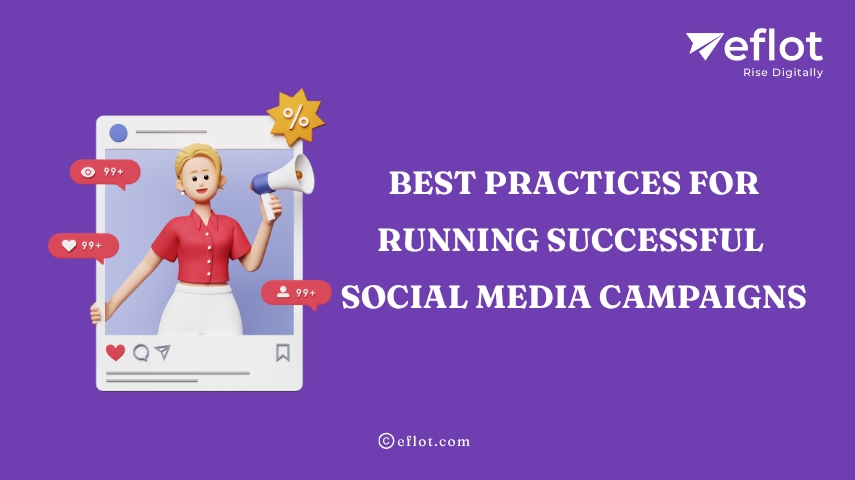
Ever wondered why some social media campaigns become a hit while others hardly get noticed? From my experience in digital marketing, running a successful campaign isn’t just about posting content—it’s about having a clear strategy, knowing your audience, and tracking results. I’ve seen that campaigns work best when every post is planned, creative, and tailored to what your audience wants to see.
I have learned that measuring results and adapting your approach is just as important as creating content. By following the right practices in Social Media Marketing, I have been able to run campaigns that grab attention, increase engagement, and even drive sales. Here, I’ll share the best strategies I use to make social media campaigns successful, helping businesses grow their presence online simply and effectively.
What Are Social Media Campaigns?
A social media campaign is a planned effort to reach a specific goal using social media platforms like Facebook, Instagram, LinkedIn, Twitter/X, TikTok, or YouTube. Unlike regular posts, campaigns are organized, have a clear objective, and are designed to get results.
Purpose of social media campaigns:
Increase awareness about your brand or product
Engage and interact with your target audience
Generate leads, sales, or website traffic
Promote special events, product launches, or offers
Types of Social Media Campaigns
Different goals require different types of campaigns. Some common types include:
Brand Awareness Campaigns: Make people recognize your brand. Example: a new company launching a social media presence.
Engagement Campaigns: Encourage likes, shares, comments, or interactions. Example: posting a poll to get audience opinions.
Lead Generation Campaigns: Collect contact info or sign-ups from potential customers. Example: offering a free guide in exchange for email addresses.
Product Launch Campaigns: Highlight a new product or service. Example: posting teaser videos before a launch.
Seasonal/Event Campaigns: Focus on holidays, festivals, or events. Example: Black Friday sale promotions.
Each campaign type has a specific goal, and your content and strategy should match that goal.
Choosing the Right Social Media Platforms
Not every platform is suitable for every business. Choosing the right platform is key to reaching the right audience.
Facebook & Instagram: Great for visuals, stories, ads, and reaching a broad audience.
LinkedIn: Perfect for B2B businesses, professional services, and networking.
Twitter/X: Best for short updates, trending topics, and interacting with audiences in real-time.
TikTok & Instagram Reels: Ideal for short, engaging videos, especially for younger audiences.
YouTube: Excellent for detailed video content like tutorials, reviews, and brand storytelling.
Tip: Focus on platforms where your target audience is most active. Quality matters more than being present everywhere.
Setting Clear Goals for Your Campaign
A campaign without goals is like a ship without a compass. Goals give direction and help measure success. Use SMART goals:
Specific: Be clear about what you want. Example: “Increase Instagram followers by 500 in one month.”
Measurable: Track progress using analytics tools.
Achievable: Set realistic targets based on resources and audience.
Relevant: Align your campaign with your business objectives.
Time-bound: Set a timeline for your campaign to create urgency.
Understanding Your Target Audience
Knowing your audience is critical. You must understand who you are talking to. Key points to consider:
Demographics: Age, gender, location, language
Interests and hobbies: What topics or products they like
Behavior: When and how they use social media
Challenges/pain points: What problems they need solutions for
Creating Engaging Content
Content is the backbone of social media campaigns. Without engaging content, your campaign won’t get attention. Types of content to use:
Images, videos, and GIFs
Short-form videos like reels or TikTok clips
Carousels, infographics, and slides
Polls, quizzes, and interactive stories
Informative blogs, tips, or guides
Tips for better content:
Keep your brand voice consistent across posts
Tell stories that emotionally connect with your audience
Use clear calls-to-action (CTA), like “Sign up now” or “Learn more”
Make your content visually appealing and easy to understand
Budgeting and Paid Promotions
While organic content is important, paid promotions help reach more people quickly. Tips for budgeting:
Decide how much to spend per platform based on audience size and campaign goals
Focus on high-performing posts for paid ads
Track the return on investment (ROI) to see if the campaign is worth the cost
Paid vs. Organic: Organic content builds trust and engagement over time, while paid promotions accelerate reach and results. A combination of both works best.
How to Run a Successful Social Media Campaign
Running a campaign requires careful planning and execution. Follow these steps:
Plan your campaign – Define goals, audience, platforms, and timeline
Create a content calendar – Decide what content to post and when
Design creative content – Use images, videos, and catchy captions
Use hashtags and trends – Helps content reach more people
Collaborate with influencers or brands – Increases credibility and reach
Post consistently – Maintain engagement with regular posts
Engage with your audience – Reply to comments, DMs, and mentions
Monitor and optimize – Track metrics and improve based on results
Monitoring and Measuring Campaign Performance
You can’t know if your campaign worked without tracking results. Key metrics to track:
Engagement rate (likes, comments, shares)
Reach and impressions (how many people saw your content)
Conversions (leads, sign-ups, sales)
ROI from paid campaigns
Tools for tracking performance:
Meta Business Suite
Google Analytics
Sprout Social
Hootsuite
Regular monitoring allows you to tweak your strategy and improve results.
Best Practices for Campaign Success
Here are tips that I follow to make campaigns successful:
Keep your messaging consistent with your brand identity
Post when your audience is most active
Experiment with content types and A/B test to find what works best
Collaborate with influencers, other brands, or communities
Learn from past campaigns and improve continuously
Running a successful social media campaign requires planning, creativity, and constant monitoring. By understanding your audience, setting clear goals, creating engaging content, and tracking results, you can boost brand awareness, increase engagement, and achieve measurable outcomes. Consistency, testing, and learning from past campaigns help improve performance over time, making your campaigns more effective and impactful.
